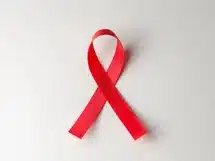A global spike in new coronavirus, now officially known as Covid-19 is concerning and confusing. The figures don’t add up as there are a number of holes in the way the data was collected, analysed and shared. Is China masking the epidemic’s true scale? Our special report.
It was on December 30th. Dr Li Wenliang, an ophthalmologist at Wuhan Central Hospital, sent a message to a group of fellow doctors warning them about a possible outbreak of an illness that resembled severe acute respiratory syndrome (SARS) in Wuhan, a city of 11 million in Hubei province of China, where he worked.
Li wasn’t authorised to share the information, but he wanted to warn his fellow doctors so that they would protect themselves. He asked them not to share the news outside the WeChat group, but soon the chat had spread—via screenshots.
He was soon summoned to the Public Security Bureau in Wuhan and warned not to disclose any information and data about the virus. On January 10th, Li began coughing; he ran a fever the next day and was hospitalized, and was given a diagnosis of coronavirus. The general public was still largely unaware of any outbreak as local authorities in Wuhan tried to hide data and keep the outbreak secret.
On the evening of February 6th, Li died, of complications of coronavirus. In the days before his death, Li said “If the officials had disclosed information about the epidemic earlier I think it would have been a lot better”, in an interview with The New York Times. “There should be more openness and transparency”, he said.
Li’s death crystallised the outrage and frustration felt across China over the initial cover-up of the deadly virus that has now spread to 60 countries, killing 2,924 people and infecting more than 85,187 people as of Feb 29.
The outbreak has raised a number of questions about mishandling in releasing data and information. There have been contradicting statements and data about how early infection spreads and how the new coronavirus is passed between people. There is also no clarity on whether the new coronavirus may be more contagious than current data shows. Lack of reliable timely information also gave rise to misinformation. Chinese popular messaging app WeChat was spilt over almost instantly with rumours and conspiracy theories: that the U.S. government had developed the virus as a biological weapon; that tens and thousands of people have already died; that coronavirus was spread by pigs and snakes; that it could be prevented with smoking or urine.
Dr Yu Xiaohua, a Chinese professor at the University of Göttingen in Germany said, “Infectious disease has its mode of transmission, so it’s hard to fake the number”.
Dr Yu published his study on the 21st of January and it suggested that if only 70% of the infected patients are quarantined, the final count of the infected people could potentially reach 1,90,000, with more than 13,930 deaths. And, 70% is the quarantined percentage he estimated the situation in Hubei. Outside of Hubei, it can even reach 80% or 90% in some areas.
Since the majority of the deaths have occurred in the Hubei province, the quarantined percentage nationwide is definitely lower than 80%. According to his calculation, even with 80% quarantined cases nationwide, the infected number would be around 8,729 by the end of January and 14,820 by the end of February.
“I don’t trust their numbers, I trust what I have learned,” clarified Dr Yu.
According to him, only if the quarantine rate reaches 90% can the epidemic eventually be controlled. “It can be difficult to track every case.”
However, the human intervention of the data is not the only complicating factor that turned the interpretation of the data into a hall of mirrors. Many unknown facts about the coronavirus have contributed to the labyrinth. So far, COVID-19 seems to be less lethal than other major epidemics in recent decades, such as SARS, MERS or Ebola.
But whether or not the current death rate of COVID-19 calculated as deaths/cases is correct, is still worth questioning. Experts have doubts about both the numerator and denominator of the formula.
“It can be difficult to track every case, especially in far-flung areas when the infection is mild and there is no good test available, said Dr Shahid Jameel, a leading virologist, and the chief executive officer of Wellcome Trust DBT India Alliance. “The genomic test available now is hard to do and expensive. So, what is being measured and reported is pretty much-confirmed cases that have come to hospitals and that too in urban centres. But we get a sense of the scale of the outbreak from it.”
China has a tradition of not being transparent when it comes to releasing government information and public data. China’s secrecy during the severe acute respiratory syndrome, or SARS, epidemic in 2002 and 2003 also raised concerns about how reliable the Chinese government data is during a health crisis. However, Dr Jameel says that he believes China is much more forthcoming with COVID-19 than it was with SARS.
“They [Chinese government] are just overwhelmed right now and may not themselves have the true picture, especially with mild asymptomatic cases as there is no quick and easy test,” said Dr Jameel.
While China’s government, was praised by the U.N. agency for its response to a new coronavirus, local officials in Wuhan have faced pushback for being quiet about the virus during the Lunar New Year in January and the heavy travel time allowed the virus to spread widely.
It is clear that the Chinese government wanted to avoid panic and therefore it suppressed information and real data at the start. The doctors and whistleblowers were muzzled and the public was kept in the dark. The most fateful consequence of the official silence was that it facilitated the exodus of some 5 million people in the weeks before the city was quarantined on January 22, thus helping to transport the virus all over the country and overseas.
Despite censorship, Chinese citizens have used social media to express their frustration with officials for sharing wrong information and data. Hubei province Governor, Wang Xiaodong had to correct himself multiple times after issuing incorrect numbers on the number of protective masks being produced. Initially, he claimed the number was 10.8 billion masks, but he then adjusted the number to 1.8 billion and then again to 1.8 million.
On Feb 12, almost a month after the outbreak, China reported that Feb 11 had the lowest number of novel coronavirus pneumonia cases in half a month. But two days later, as authorities changed their threshold for diagnosis, Hubei health authorities said the hard-hit Central China province reported 14,840 additional cases of the disease.
Challenges of health data collection in China
In China, there are different clusters of people who have not been tracked. The worst-hit communities are migrant workers who had returned from Hubei, people who could not get admitted to hospitals and people who tested negative initially but became ill later.
Previously, testing positive for the virus was the criteria to be counted, but there was not enough supply of testing kits, and the result didn’t seem reliable; sometimes, several tests were performed until the patient tested positive.
“No test is perfect, and some quite good tests miss an absolute number, also test may not be positive on the first day of contact,” explained Dr. Gagandeep Kang, Executive Director at India’s leading scientific institute, Translational Health Science and Technology Institute.
Since February 13th, the Hubei health authorities changed the way cases were confirmed, any patient whose CT scan of the lungs showed a telltale pattern of pneumonia (which wasn’t necessarily COVID-19) was decided to be considered as an infected case. This new data collection and description eventually caused drastic falls and spikes in tallies across countries. This further contributed to the skepticism towards the official data.
“In China, we know that the diagnosis was first based on a combination of either clinical features or a laboratory test, but later it was changed to those were confirmed positive by the laboratory test,” said Dr Kang. “That is why accurate numbers are difficult to figure out.”
She says that rather than fixating on absolute numbers of cases (which we do not know for a disease as common as influenza either), we should be tracking trajectories of case numbers, deaths and recoveries using commonly agreed definitions.
“Whether numbers are going up or down and their geographic spread can teach us a lot about a new disease,” said Dr. Kang.
China’s National Health Commission (NHC) is the government body responsible for the health and coordination of the national resources to combat the pandemic. It is also the leading agency for the current outbreak to collect and share data of the coronavirus.
Under the NHC, each competent health service department collects public health data. The data then gets passed on to the municipal and provincial levels where from health commissions of each province, autonomous region and municipality areas update their data on a daily basis.
According to China’s regulation on the Urgent Handling of Public Health Emergencies of Hubei province, the residential community of every sub-district and village functions as the primary unit, and assists the local health administrative institutes to collect and file information, home isolation, and other public health measurements.
Then it gets passed on to the municipal and provincial levels where health commissions of each province, autonomous region, and municipalities update their respective tally of data. The community workers are doing the main weight-lifting. They are not only the ones responsible for collecting data but also making sure that any suspected case is tested and then being transferred to the designated hospitals.
Amidst the coronavirus outbreak, this chain of data collectors has come under the extreme burden and was largely over-capacitated.
Even though the NHCs (at all levels) in China, WHO, and other national and international media outlets have been disclosing statistics and some real-time updates daily, still it seems that figuring out the total number of confirmed cases and deaths owing to COVID-19 was full of gapes and holes mostly because, during coronavirus outbreak, the health officials have altered guidelines to classify the confirmed cases.
Local health system struggles
Also as reported by China’s NHC, on average it takes about 9.84 days for a patient in Wuhan, the capital city of Hubei province to be hospitalised. Many missed the best opportunity to be treated and eventually died at home. It is not clear whether such deaths are taken into official data account.
There are a total of more than 152,040 doctors in Hubei, according to China’s national health authority, plus a special team of doctors which was sent from other parts of China. There is a total of 66,337 cases reported in Hubei alone by Feb 29, according to data released by John Hopkins University. That means for every patient there is at least more than two doctors available. This data is again suspicions as there are a number of reports from Wuhan where people complain that there are not enough doctors available in hospitals.
Wuhan has been overburdened with new cases and health workers are struggling to treat new patients. They also lack access to diagnostic kits because of which they are not able to confirm if the people who died were suffering from COVID-19. Therefore, such patients will never appear in official records. According to a local civil self-help organisation in Wuhan which Health Analytics Asia contacted there were no beds available even in mobile clinics which were established right after the outbreak, especially at the end of January.
“My mother was diagnosed as a suspected case after a CT scan and blood test, but because of the lack of Nucleic acid amplification testing (NAT),even though she had a fever for 4 days, she could not be admitted,” Zhang, a resident of Wuhan told Health Analytics Asia. She said that her family reached out to the community health centre but there were no beds available for new patients there as well. “We then waited in the designated hotels but had no treatment for four days,” said Zhang.
Given the widespread scale of the outbreak, China has adopted a very strict procedure for infected cases to be admitted. In order to be admitted, the NAT is important. But it has to be approved by the health commission of the sub-district with the coordination of the residential community mass workers and the designated hospitals. People in Wuhan and other coronavirus hit provinces created a self-help group on social media to help people. On Weibo (Chinese equivalence of twitter) – a Chaohua (translated as “super-topic”, similar like a hashtag) for ‘Help! COVID-19Patients’ has now more than 3.55 billion reads and more than half a million followers.
The majority of fatal cases are elderly and/or have a chronic disease that would increase their susceptibility to infectious diseases. About 80% of people who died from the virus in China were over the age of 60, and 75% had pre-existing conditions, according to a recent report from China’s National Health Commission. Some were suffering from diabetes. It is also not clear whether deaths that have not been included in the tally might have been caused by other illnesses.
“But rather than fixating on absolute numbers of cases, we should be tracking trajectories of case numbers, deaths and recoveries using commonly agreed definitions, said Dr Kang. “Whether numbers are going up or down and their geographic spread can teach us a lot about a new disease.”
In less than two months, the COVID-19 has gone from a spikey-shaped virus infecting people in Wuhan, China, to a global epidemic. Data on the virus is changing by the day, with Iran, a country of eighty-three million people has now become a new epicentre of the coronavirus—with the highest mortality rate in the world. “We are actually in a very delicate situation in which the outbreak can go in any direction based on how we handle it,” WHO head Dr Tedros Ghebreyesus told reporters in Geneva during a press briefing. “This is not a time for fear. This is a time for taking action to prevent infection and save lives now.”
Meanwhile, China is rolling out fresh data collection campaign which includes phone data tracking and facial recognition to more accurately and quickly finds infected people, especially as millions of people, are resuming work after an extended holiday. At least 15 provinces and cities with a combined population of over 358 million have announced big data measures.

















